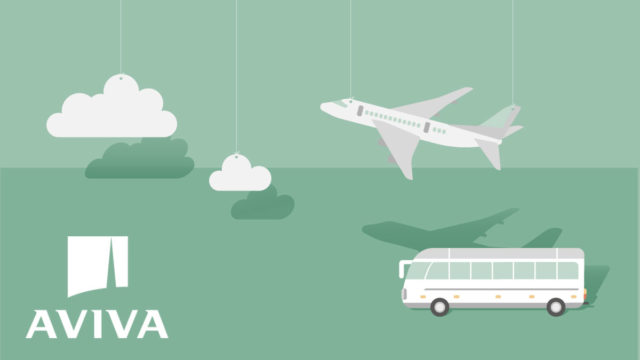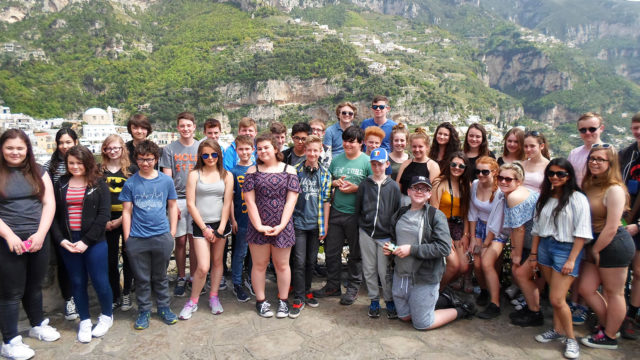
With our recently released Sustainability hub showcasing some of our real green wins, we thought we could list a few more ways on how to make your tour more sustainable.
So, read on.
Last updated: Nov 8th, 2023

With our recently released Sustainability hub showcasing some of our real green wins, we thought we could list a few more ways on how to make your tour more sustainable.
So, read on.
For convenient school travel, some parts of transport are tough to remove as coach, train, and plane provide a quick turnaround to getting you and your school trip where it needs to be within a reasonable timeframe.
Unfortunately, they release vast amounts of greenhouse gases into the atmosphere, which ultimately raises the global average. So, considering how we can reduce their impact is an important element of sustainable travel.
Flights get a huge amount of attention in the media. Typically, long-haul shoots out 102g CO2 per passenger and short-haul is even more at 131g. However, some tours require flights to get you there.
With that said, lots of our tours utilise coach travel due to the awesome CO2 savings it can give. In general, and depending on a few variables, coach travel is 75% lower per passenger to planes when releasing carbon into the atmosphere.
Single-use plastic is a major thorn in the side of helping our planet. And on tour is no different. One of the easiest ways to reduce plastic consumption is to encourage your students to pack reusables, such as:
Think about the toiletries you bring too!
Decant soaps, shampoos, and conditioners from the bottles you already have into refillable silicone bottles. Plus, choose zero waste products such as shampoo bars and deodorant paste, and opt for a bamboo toothbrush.
All small changes, but massive wins in being eco-friendly.
Packing lighter is another way of reducing your carbon footprint too. Whether by plane, train, car or coach, lighter loads mean less energy used by those transportation aspects which carry you, your students and all the luggage for your school trip.
You can achieve this by taking clothes you’ll wear more than once, leaving larger items at home, and putting multiple toiletries into reusable containers.
Using our travel app Vamoos means that risk assessments, medical records, insurance details, trip itineraries and more can be digitised and made easily accessible on your phone, tablet, or laptop whilst you’re on the go.
This means reducing paper consumption, energy output and taking one more step to stopping the need to cut down trees.
And that’s what our Finance team are doing. They use the bookkeeping app Sage to avoid any type of printing, which means they’re directly contributing to waste reduction.
Being environmentally friendly is the aim, and being conscious of how your daily actions on tour affect local economies can bring huge savings.
There are many ways our actions impact the environment we visit and the lives of local people. With that in mind, we should do what we can to conserve local water and energy resources.
So, take short showers, recycle your waste, take your litter with you, reuse towels, use footpaths to avoid nature disturbance and turn off the tap when brushing your teeth to save water.
Support the local economy where you can. Stay in locally owned accommodation, eat-in cafés and restaurants run by locals, try local cuisine made from locally sourced ingredients and buy souvenirs from local suppliers. Also, avoid international food chains where your money does not benefit the local economy.
Fortunately, our tours look to offer local options to help minimise your impact. For example, there’s the Fondo Galatea working farm in Sorrento that includes pizza, cookery classes, a restaurant and a visit of the farm. Or, if in Iceland, your tour could include the family-run ice cream farm in Efstidalur II.
Using local is an obvious positive economic factor, but it also aids the environment too. Utilising nearby resources like food, businesses, and restaurants builds the infrastructure, so it isn’t reliant on outside help. Because of that, it reduces the carbon travel emissions of produce and people getting to their working destination.
Food waste is one more aspect of greenhouse gas emissions that can often be overlooked. After all, what’s a few scraps on your plate or some bits left in the lunchbox?
Well, the 2021 Food Waste Index from the United Nations Environment Programme shows food waste contributes to 8-10% of global greenhouse emissions. So, when on tour, you and your students can help by only packing lunches you’ll eat or only ordering food you’ll consume.
We know changing long-held ways of doing things will take time. But we hope this list will help you and your students make your tour more sustainable.
We’re on our journey to reducing, or balancing, our carbon footprint and are excited to bring you along with us.
If you’ve got any ideas that could build on the above, please call or email us.

We know it’s getting warmer out there, so we’re attempting to leave one less footprint by balancing or outright reducing our carbon output. We don’t have all the answers but this is our journey. Come and be a part of it.
Find out more
To make sure you've covered for the unexpected on your trip, we chatted to the people in the know about keeping your tour insured.

Usually, you'll have one point of contact with us when discussing the finer details of your tour - but that's just one part of our…

The Benefits of School Trips Schools play an essential role in supporting young people’s mental health and development into young adults. We believe that…